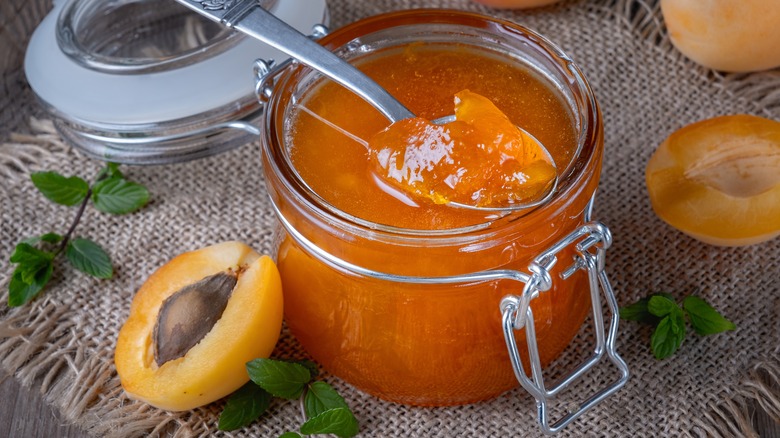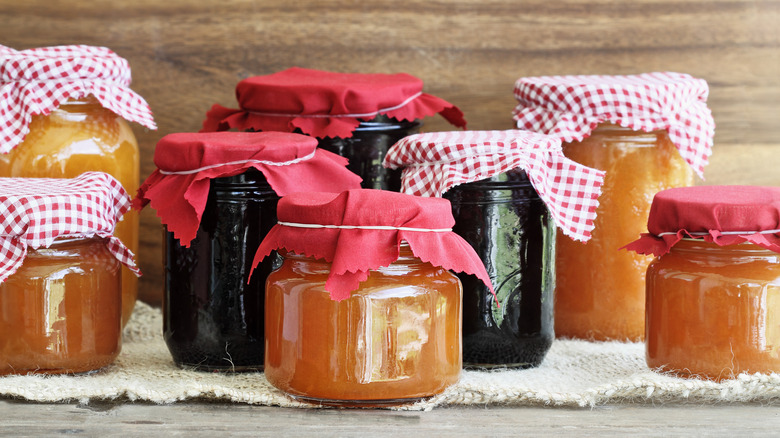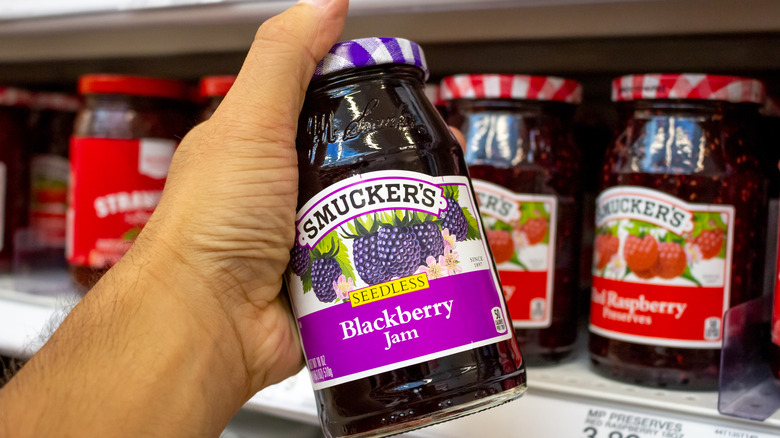How Long Does Opened Jelly Last?
As folks consider ways to stretch a food budget, many are paying closer attention than ever to expiration dates. Long gone are the days when people would throw something tasty in their shopping cart and cross their fingers, hoping they would use it up before it goes bad. Refrigerated items are the first to be second-guessed when filling up a shopping cart, and jelly is right up there with produce when considering what might start to turn quickly.
The good news is you don't have to worry much about your jelly going bad if it's stored properly in the fridge after it's opened. Jellies are labeled with a "best by" date that signifies when the quality of the product will begin to deteriorate, but they are safe to consume for 6-12 months after that date has passed. While this is a forgiving shelf life for those who let food items sit longer than others, 6 to 12 months is a broad range that encompasses all fruit jellies. Narrowing down those numbers requires more specific information about the type of jelly being stored. Is it a jelly or a jam, what kind of fruit is it made with, and whether it is produced commercially or homemade are all questions that need addressing when trying to assess how long jelly will last once opened. The shelf life will vary depending on the type of fruit spread you are storing.
Different kinds of jelly have different shelf lives
Commercially manufactured jelly is comprised of fruit juice, sugar, and pectin. Pectin is a fiber that becomes gel-like when mixed with acid, commonly found in dozens of culinary conceptions. Jam is made similarly, except with ground fruit instead of fruit juice. Both commercially produced versions of fruit spread also contain additives that increase their shelf life. The type of fruit used to construct the spread can also impact its longevity. Jellies manufactured from fruits like berries tend to last longer because of their high acid content. Other fruits, such as peaches and melons, have a lower acid content and may be more susceptible to spoilage.
For decades, many have enjoyed making their own jams and jellies at home. However, while these will also persevere for quite a while, the shelf life does decrease a bit because the lack of preservatives in a homemade product results in less protection against microorganisms that can spoil jelly and jam. Unopened, homemade jelly can remain good up to a year, but once opened, it is recommended that the product be consumed in 1-3 months for the best quality.
Keeping jelly fresh and what to watch for
If an opened jar of jelly has liquid forming at the top, discoloration, an unwelcome odor, or signs of mold, those are tell-tale signs that your jelly has turned and should be discarded. Sugar-free jelly is something to keep a keen eye on, as the lack of sugar in the product will make it more prone to decay. Where commercially manufactured jelly with a typical amount of sugar can last up to a year once opened, sugar-free versions may only be good for up to nine months.
Jelly stored in a cool, dry, dark environment will endure for up to a year before being opened. It can be kept at room temperature after opening, but only for a short time, and it's recommended that jelly be refrigerated once used. For optimal results on the preservation of your fruit spread, there are a few tricks that can help extend its life. One thing to remember is to keep the lid sealed tight when not in use to prevent bacteria from being introduced. Another consideration should be to use clean utensils every time you use them, for the same reason. The next time you're considering whether or not to grab some Smucker's for lunches or even some elegant desserts, you don't have to fret over how long it will last, as long as it's stored properly.


